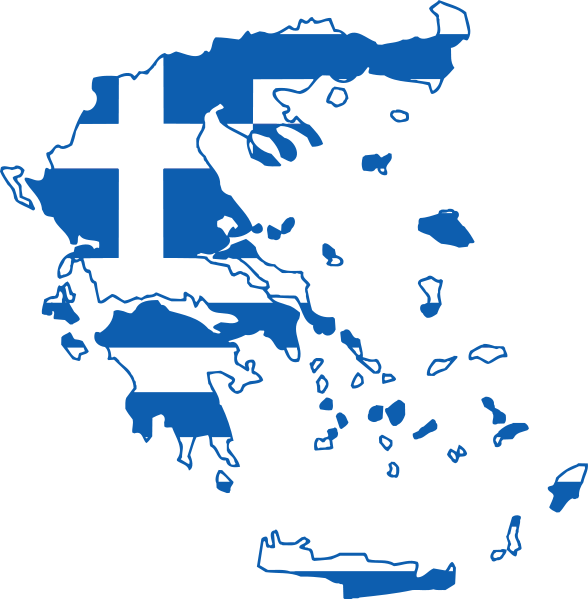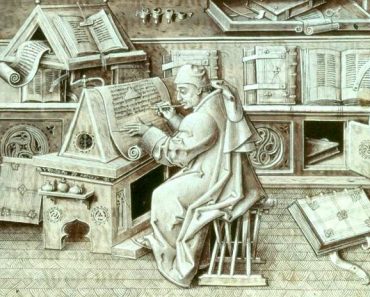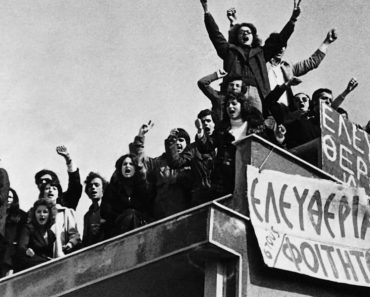Subscribe now for full access and no adverts
REVIEW BY ANDREW SELKIRK
Every year Professor Quinn has the task of sorting out applications from those wishing to study classics. Many of them say that they wish to study classics because Greece and Rome are ‘the roots of Western civilisation’. In this book, Professor Quinn disagrees. Who is right?
Quinn, who has just been stolen from Oxford for an even more prestigious chair at Cambridge, set out her academic stall in her previous book In Search of the Phoenicians, where she offered a new take on this much-debated subject, suggesting that ‘The Phoenicians did not in fact exist as a self-conscious collective or people’. The term ‘Phoenician’ itself, she says, is a Greek invention. She now sets out to do the same thing with the Greeks, arguing that civilisation is essentially a 19th-century British invention. This book is an attack on what she calls ‘civilisational thinking’.
‘I want to tell a different story’, she says, ‘one that does not begin in the Greco-Roman Mediterranean and then re-emerge in Renaissance Italy. I want to trace the relationships that built what is now called “the West” from the Bronze Age to the Age of Exploration… More broadly, I want to make the case that it is connections, not civilisations, that drive historical change.’
The result is a book with a huge number of fascinating stories. It is beautifully written, with all the latest facts and theories laid out before us. She calls it ‘a 4,000-year history’, spread almost from China to the Straits of Gibraltar, and bringing in all the latest ideas of climate change and how the climate affects history, and all the latest news of ancient DNA, which is beginning to give some meaningful results.
A journey through time
Quinn begins her account with Byblos in Lebanon, the main port for Egyptian shipping heading north. This is where she brings in one of her main themes: the revolution that was the adoption of open sea sailing in the Mediterranean. But she also looks at two other revolutions that occurred around this time: the popularisation of the donkey and the adoption of the wheel, initially on the flat plains of the Steppes. This is where connectivity begins on a larger scale.
This was a connected era; in Egypt, tablets have been preserved at Amarna that formed the diplomatic correspondence between the pharaohs and a ‘Band of Brothers’ formed by the rulers of the east Mediterranean states. Here, Quinn dives into the problems of one of the smaller of these kingdoms at Ugarit, where numerous tablets are well preserved. However, all this comes to an end with the downturn marked by the Sea Peoples.
The Dark Age of Greece inevitably focuses on Lefkandi on Euboea, where there is evidence for occupation between the palaces of the 12th century BC and the emergence of Greek cities in the 8th century. However, when Greece wakes up, it is followed by an orientalising phase, though this connection with the East is balanced by the sending out of Greek colonies to much of the east Mediterranean. This archaic phase also sees the invention of the alphabet, with major contributions from the East, notably the Phoenicians.
Quinn revisits the subject of the Phoenicians, and gives a fine account of how the Assyrians, in their desire for silver, pushed the seafarers of Tyre to venture the length of the Mediterranean to the silver mines of Spain.
But Greece, which is often considered the heart of the civilisation story, gets short shrift. Borrowing from Herodotus, she deals with the Persian Wars by giving the Persian version, labelling the Battle of Thermopylae as a Spartan defeat – though the Spartans are otherwise mostly ignored. When she comes on to the great days of Athens, she concentrates on the war with the Spartans, which she argues ends with a Persian victory. And then we come to the Romans, whose success Quinn also calls into question. She begins by comparing Augustus with a more modern dictator: ‘Rather like Muammar Gaddafi in Libya, his authority was largely informal’, which though true is a good put-down of the man who was arguably the key to the success of the Roman empire. Then she comes on to Rome itself: ‘It’s hard to imagine ancient Rome: the constant sound of the building works, the poverty, the filth, the disease and the slaves, all that makes sense’. By modern standards, Rome may indeed have been poor, filthy, and disease-ridden, but would it have been dirty compared with other towns of the same era – or, indeed, with some modern towns?
Having disparaged Augustus, Quinn goes on to spend too much time on Romulus and Remus, and then takes a meandering walk through Rome. She ends up in London, discussing the tablets from the Bloomberg site, before analysing burials from York to show the extent of immigration in Roman Britain. But were London and York typical Romano-British towns? And with that, Rome is dealt with. There is nothing about the Golden Age of the 2nd century AD, no mention of Hadrian. But then I suppose this is not meant to be a consecutive history, but rather a smorgasbord of delicious stories – and much of the detail she regales us with is fascinating. This is a very readable book, which reminds us of the achievements of all the other peoples we so often ignore.
Organising the world
The latter part of the book is devoted to the Muslim expansion, and is both fascinating and slightly disappointing. Quinn gives a good account of the Sasanian Persians and their numerous connections who provided much of the intellectual and artistic splendour that was eventually taken over by the Muslims. But I would have liked to have had an account of the Muslim conquest itself, of how former Roman towns were abandoned and new towns appeared in different places. Instead, we begin in France, where the Umayyad invasion is turned back at Poitiers.
There is, however, a scintillating account of the ‘Translation Movement’, where the caliphs commissioned new works of science, geography, poetry, history, and medicine, and set the scholars to work translating Greek scientific texts. (I note with interest that the translations were commissioned by the caliphs. I can’t imagine the Greek scientists working under commission.) There is also a fascinating account of how Arabic numerals were adapted from Indian mathematicians and eventually arrived in western Europe via the Muslim inventors of algebra.
Quinn ends her book by saying that ‘It is time to find new ways to organise our common world’. But I don’t think that, in this book, she has found these new ways. Quinn has rejected the traditional ‘civilisational’ approach but, in my opinion, she has not put anything in its place. She talks about ‘connectivity’ but has not demonstrated how this works. The book is full of splendid and tasty gobbets, but they do not form a cohesive meal.
One element that I wish had been explored further is the way in which Greek towns differed from earlier urban sites. If you examine their layouts, the earlier pre-money towns are based around the palace or the temple where the ruler lives and controls the society by gift exchange. They form, in effect, a totalitarian society. Greek towns are very different. There are no palaces, but instead they are centred round the agora, or marketplace. The agora was an open space where the citizens came together, to talk and discuss, to buy and sell, and to make common decisions about how the town should be ordered. In my view, this is where democracy was born.
The big invention is money and the market economy. Money gives choice, and choice gives freedom, and freedom gives that entrepreneurial spirit of curiosity that fired the Greek miracle. It is the same quality that reappeared following the Renaissance with the spirit of laissez-faire that led to the Industrial Revolution of which we enjoy the benefits.
Indeed, I can’t help thinking that the very title of this book is wrong. Of course the Greeks were influenced by the outside world, but that doesn’t mean that they were ‘made’ by the outside world. The Persians did not invent democracy. This, and several other core ingredients of modern Western civilisation, were developed by the Greeks, and I think we would do well to remember that. I believe we are living in a civilisation shaped by the most impactful revolution in the history of the world. I think it is worth exploring and looking for its roots in Greece and Rome. I believe that Professor Quinn’s students are right, and that the professor is wrong.
How the World Made the West: A 4,ooo-year history
Josephine Quinn
Bloomsbury, £30
ISBN 978-1526605184






